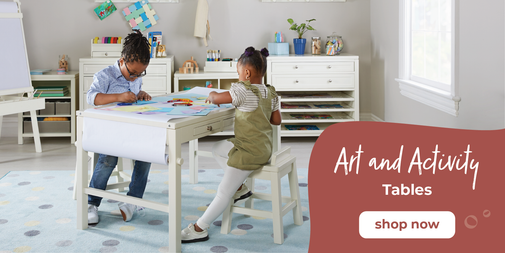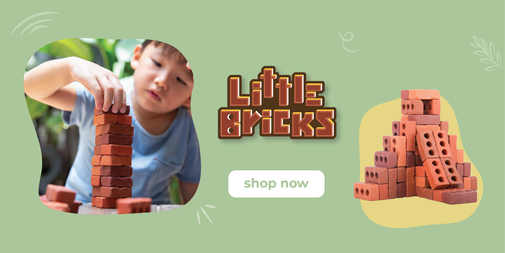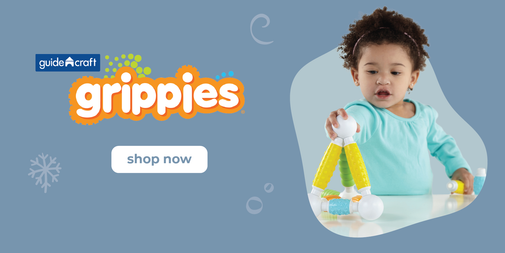Self-Serve Sensory Play for Child-Led Exploration

The goal of sensory play is to encourage children to explore the world around them—whether in a sensory bin, out in nature, or even in your kitchen or bathtub, sensory play is any play invitation that offers opportunities to deeply engage a child’s senses.
It’s become popular for parents to design complex sensory bins or play trays for children—often based on a theme or arranged in an aesthetically pleasing setup. While this is all lovely, it’s not always the most child-directed way to present materials, and it’s definitely not the only way to offer sensory play to children. To take sensory play in a more child-led direction, consider a self-serve sensory play supply shelf!
Setting up a self-serve sensory play supply shelf gives the child agency in designing their own play by providing materials that encourage sensory exploration without adult expectations. The adult’s job here is to curate materials that will engage the child’s senses, make them easily accessible and readily available, and then walk away and let the child decide how to use them.

Here are 4 simple tips for setting up child-led sensory play:
1. Set up materials for sensory play on an open shelf
This works best when the child can see and independently reach all of the available materials. By presenting materials in open containers on an open shelf, we offer the most access possible.

2. Limit what’s available to what you’re comfortable with getting messy
When offering sensory play materials for independent use, check in with yourself (the adult) about what amount of a given sensory filler, water, loose parts, etc., you are okay with ending up on the floor or around your play space.
Chances are that, especially the first few times you offer total independence, there will be accidents—and that’s okay. If you don’t feel comfortable with your child using a particular material independently, don’t offer that material.
You may want to start off with very affordable sensory fillers that are easy to vacuum up (such as rice), so you don’t feel the need to micromanage their actions and decisions.
3. Prepare an accessible space for sensory play to happen
No matter what kind of table, tray, or bin you like to use for sensory play, it’s important that you set it up near the self-serve shelf and in a way that’s easy for your child to use.
We have our sensory system set up right beside the materials shelf so that my children can move seamlessly from the shelf to the table without any obstacles. A table like this is also the perfect height for independent use. If you’re using a tray or bin instead, just make sure you place it on the floor or at a child-size table nearby for easy reach.
4. Set expectations
While it’s important to release control over the child’s play, it’s also important to have a conversation with your child to set developmentally appropriate expectations for how the materials will be used respectfully.
 Keep the guidelines simple and positive. They sometimes need to change depending on the materials being offered, but in general, our family sensory play expectations are as follows:
Keep the guidelines simple and positive. They sometimes need to change depending on the materials being offered, but in general, our family sensory play expectations are as follows:
- Materials need to stay inside the bin/table/tray as much as possible
- We are gentle with tools and loose parts
- Only scoop, pour, or hold sensory fillers (no throwing)
The goal in creating these guidelines is to make it possible for the adult to feel comfortable stepping away from the child’s play—giving them total autonomy and independence.
When we curate spaces that allow children to design their own play, we give them agency. By facilitating this kind of child-led play, we show the child that we trust their ability to act independently and make choices that influence both their own lives and the world around them.












